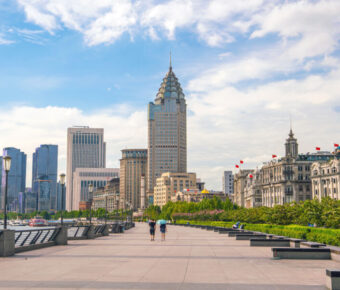
Budapest vs Berlin: Which European Capital Offers the Ultimate City Break Experience?
Budapest and Berlin are two of Europe’s most popular capitals for travelers. Both offer rich history, vibrant culture, and unique charm. Budapest stands out with its stunning architecture and thermal baths, while Berlin shines with its cutting-edge art scene and nightlife.
These cities have different vibes. Budapest feels more traditional and romantic, with its grand buildings along the Danube. Berlin has a more edgy, creative atmosphere shaped by its complex past.
Choosing between them depends on what you want from your trip. Budapest is great for those seeking classic European beauty and relaxation. Berlin appeals to travelers looking for a modern, diverse city with endless things to do. Either way, you’re in for an unforgettable holiday in these fascinating European destinations.
Table of Contents
- Historical Overview
- Berlin’s Rich Past
- Budapest’s Historical Tapestry
- Comparing Architecture
- Berlin’s Architectural Landmarks
- Budapest’s Architectural Wonders
- Local Cuisine Insights
- Berlin’s Culinary Scene
- Budapest’s Traditional Eats
- Vibrant Nightlife Comparison
- The Buzz of Berlin
- Budapest’s Ruin Bars and Beyond
- Transportation Systems Face-Off
- Navigating Berlin
- Getting Around Budapest
- Cultural Attractions Duel
- Berlin’s Museum Island
- Sightseeing in Budapest
- Shopping Havens
- Berlin’s Retail Therapy
- Budapest Marketplaces
- Accommodation and Budgeting
- Staying in Berlin
- Lodging in Budapest
- Seasonal Considerations
- Berlin Throughout the Year
- Best Times to Visit Budapest
- Exploring Beyond Tourist Paths
- Hidden Gems in Berlin
- Budapest’s Undiscovered Corners
- Frequently Asked Questions
- What are the differences in cultural experiences between Budapest and Berlin?
- How do the nightlife scenes in Budapest and Berlin compare?
- Can you highlight the cost of living contrasts between Budapest and Berlin?
- What should travelers consider when choosing between Budapest and Berlin for a vacation?
- In terms of size and population, how does Budapest stack up against Berlin?
- Are there any significant historical contrasts between Budapest and Berlin that tourists should be aware of?
- Book Your Dream Experience
- More Travel Guides
Historical Overview
Berlin and Budapest have rich histories that shaped their unique characters. Both cities experienced significant events and transformations over the centuries, leaving lasting marks on their cultures and architecture.
Berlin’s Rich Past

Berlin’s story begins in the 13th century as a small trading post. It grew into the capital of Prussia and later the German Empire. The city saw major changes in the 20th century. World War II left Berlin in ruins. After the war, it was split into East and West sectors.
The Berlin Wall divided the city from 1961 to 1989. Its fall marked a new era for Berlin. Today, remnants of the wall at the East Side Gallery serve as a reminder of this period. The Brandenburg Gate, once a symbol of division, now stands for unity.
Budapest’s Historical Tapestry
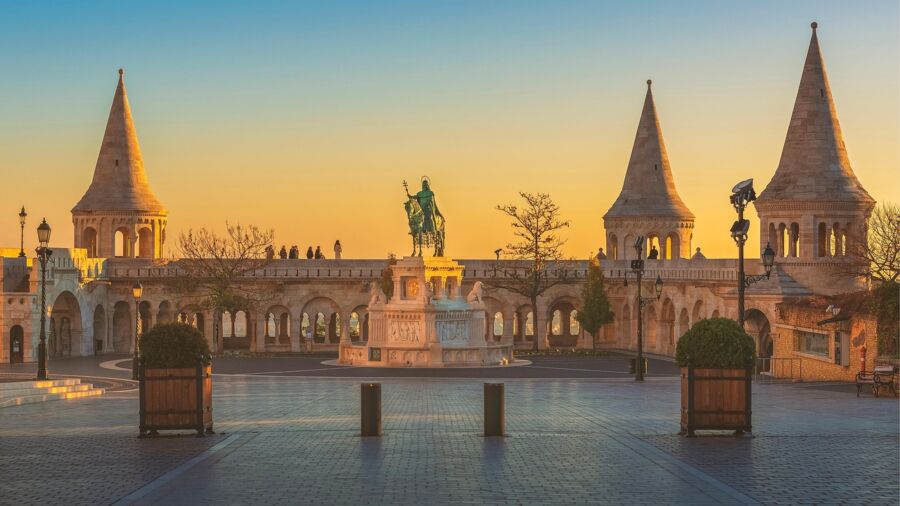
Budapest’s history spans over 2000 years. The Romans first settled the area. Later, it became two separate cities – Buda and Pest – on opposite sides of the Danube River. These merged in 1873 to form Budapest.
The city flourished as a cultural center in the late 19th century. It suffered damage in World War II but rebuilt quickly. Buda Castle, a grand palace complex, reflects the city’s royal past. The Danube River played a key role in Budapest’s growth as a trade hub.
Communist rule ended in 1989, ushering in a new chapter for Budapest. The city has since become a popular tourist spot, known for its stunning architecture and thermal baths.
Comparing Architecture
Berlin and Budapest both boast impressive architectural landscapes that reflect their rich histories and cultural influences. Each city has its own unique charm and style, with iconic landmarks that draw visitors from around the world.
Berlin’s Architectural Landmarks
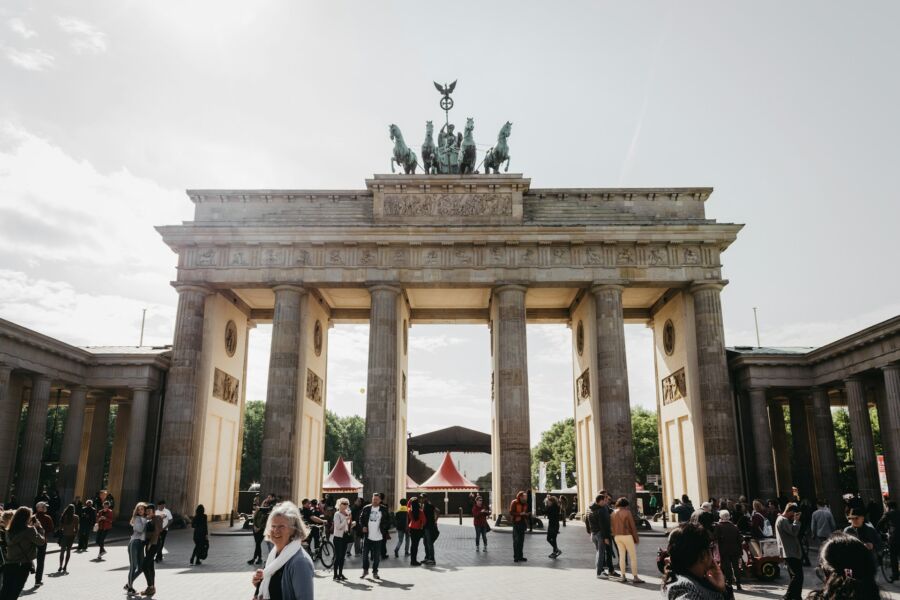
Berlin’s skyline is a mix of old and new, with buildings that tell the story of its tumultuous past and vibrant present. The Brandenburg Gate stands tall as a symbol of unity, its neoclassical design a testament to 18th-century grandeur. It’s a must-see for any visitor to the city.
Museum Island is another architectural gem. This UNESCO World Heritage site houses five world-renowned museums in stunning neoclassical and Baroque buildings. The Berliner Dom, with its impressive 100-meter high dome, adds to the city’s skyline with its Neo-Renaissance style.
Modern architecture also has its place in Berlin. The Reichstag building, with its glass dome, offers a striking contrast to the older structures. It’s a perfect example of how Berlin blends the old with the new.
Budapest’s Architectural Wonders
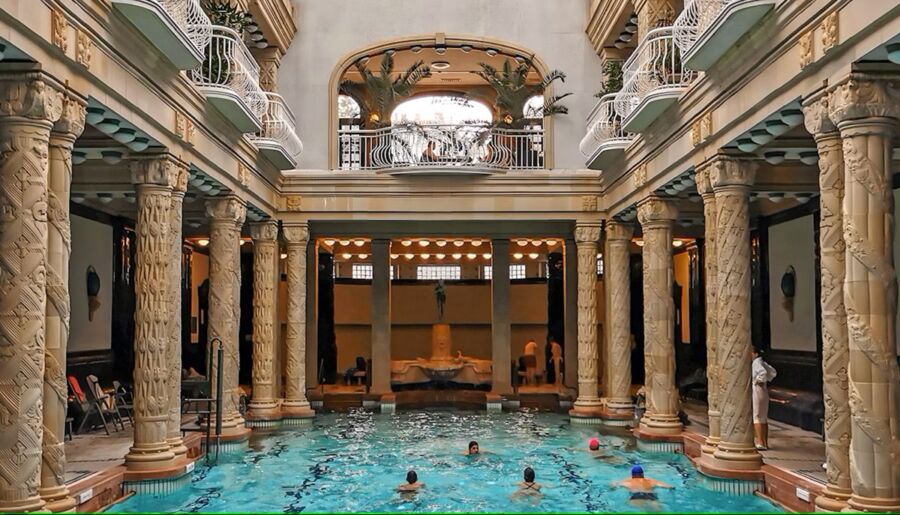
Budapest’s architecture is often described as a fairytale come to life. The city is split into two distinct parts: Buda and Pest, each with its own architectural personality.
Buda Castle is the crown jewel of Budapest’s skyline. This massive Baroque palace sits atop Castle Hill, offering stunning views of the city below. It’s not just a pretty facade – the castle complex houses museums and galleries that showcase Hungary’s rich history.
Crossing the Danube, visitors are greeted by the Hungarian Parliament Building. This Neo-Gothic masterpiece is one of the largest buildings in Hungary and a true architectural marvel. Its intricate details and grand scale make it a photographer’s dream.
Art Nouveau buildings dot the cityscape, adding splashes of color and whimsical designs. The Gellért Baths, with their colorful tiles and ornate interiors, are a prime example of this style.
Local Cuisine Insights
Food plays a big role in both Berlin and Budapest. Each city offers unique flavors that reflect its history and culture. Let’s take a taste tour of these two European capitals.
Berlin’s Culinary Scene

Berlin’s food scene is super diverse. You’ll find traditional German dishes like schnitzel and pretzels, but that’s just the start. The city is famous for its street food. Currywurst is a must-try – it’s a sausage covered in curry-spiced ketchup. Yum!
Turkish immigrants have left their mark too. Döner kebabs are everywhere, and they’re perfect for a quick, tasty meal. For something fancier, Berlin has loads of cool restaurants. Many mix German classics with modern twists.
Don’t forget about the cafes! Berlin’s coffee culture is booming. You can sip a latte while people-watching or grab a quick espresso on the go.
Budapest’s Traditional Eats
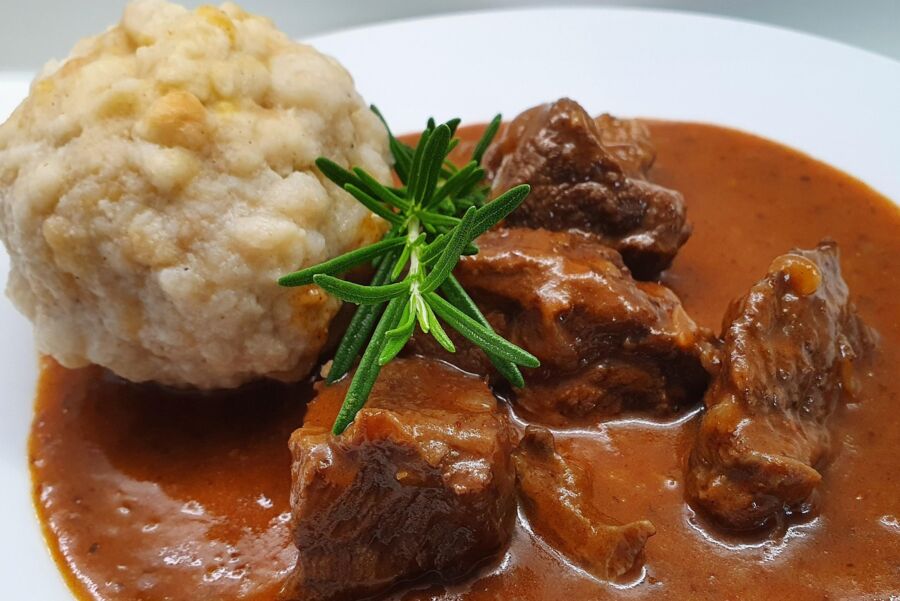
Hungarian food is hearty and flavorful. Goulash is probably the most famous dish – it’s a rich beef stew with paprika. Speaking of paprika, it’s used in lots of Hungarian cooking. It gives a nice kick to many dishes.
For a quick bite, try lángos. It’s fried dough topped with sour cream and cheese. So good! If you’ve got a sweet tooth, Budapest won’t disappoint. Chimney cakes (kürtőskalács) are a local favorite. They’re sweet, spiral-shaped pastries often coated in cinnamon sugar.
Budapest’s Central Market Hall is a food lover’s paradise. You can sample traditional meats, cheeses, and pastries all in one place. For drinks, don’t miss Unicum. It’s a herbal liquor that’s uniquely Hungarian. Fair warning: it’s an acquired taste!
Vibrant Nightlife Comparison
Berlin and Budapest both offer exciting after-dark scenes, but with distinct flavors. Each city has its own unique vibe that sets it apart when the sun goes down.
The Buzz of Berlin
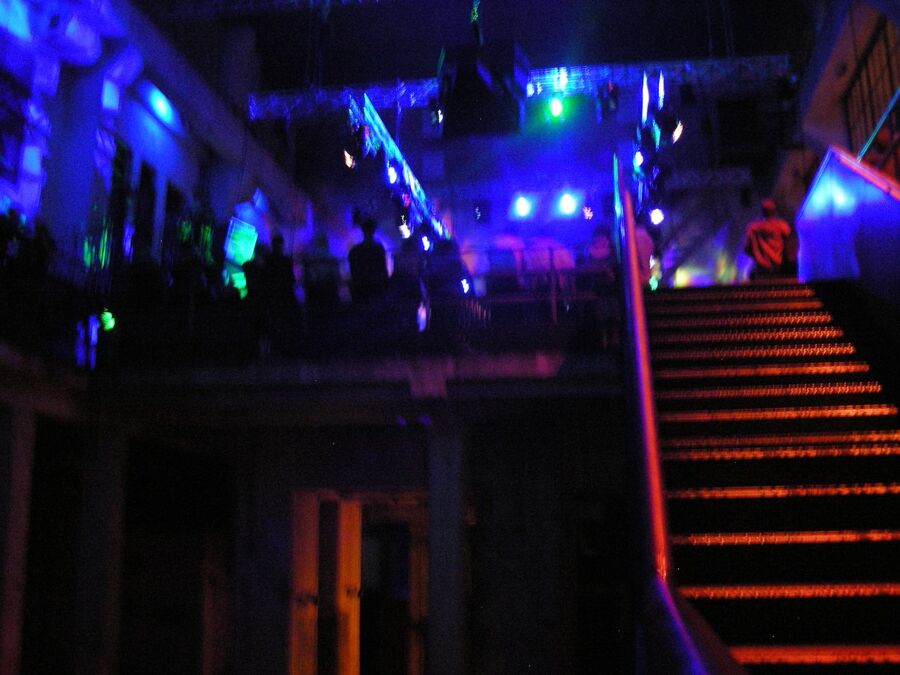
Berlin’s nightlife is legendary. The city never sleeps, with clubs that stay open all weekend. Techno music rules here, especially in spots like Berghain. But there’s more than just dance floors.
Kreuzberg and Friedrichshain are hot spots for bars and live music. You’ll find everything from hip cocktail lounges to grungy punk bars. Many places have a laid-back vibe where you can chat with locals.
Don’t miss the outdoor parties in summer. Parks and beaches turn into impromptu gatherings. It’s common to see people drinking beers by the canal as the sun sets.
Berlin’s scene is diverse and inclusive. There’s truly something for everyone, no matter your style or budget.
Budapest’s Ruin Bars and Beyond

Budapest’s nightlife centers around its famous ruin bars. These quirky spots occupy old buildings and courtyards. Szimpla Kert started the trend and is still a must-visit.
Each ruin bar has its own character. You might find mismatched furniture, weird art, or even an old Trabant car as decor. They’re perfect for bar-hopping and meeting other travelers.
But Budapest offers more than just ruin bars. The city has a growing craft beer scene. You’ll also find wine bars showcasing local Hungarian wines.
For dancing, head to clubs on Hajógyári Island. In summer, thermal bath parties are a unique Budapest experience. Picture dancing in warm water under the stars!
Budapest’s nightlife is generally cheaper than Berlin’s. It’s great for budget travelers who still want a lively night out.
Transportation Systems Face-Off
Berlin and Budapest both boast efficient public transit networks that make getting around a breeze for visitors. Let’s take a closer look at how these two cities stack up when it comes to transportation options.

Berlin’s public transport system is top-notch. The U-Bahn (subway) and S-Bahn (commuter rail) form the backbone, whisking passengers across the city quickly. Bright yellow trains zip through tunnels and elevated tracks, covering most areas tourists want to visit.
Buses and trams fill in any gaps, reaching spots the trains don’t. Visitors can buy tickets from machines at stations or on buses. A single ticket works for all types of transport – super convenient!
Pro tip: Grab a multi-day pass to save money if you’ll be zipping around a lot. The system runs 24/7 on weekends, perfect for night owls. During the week, night buses take over when trains stop.
Getting Around Budapest
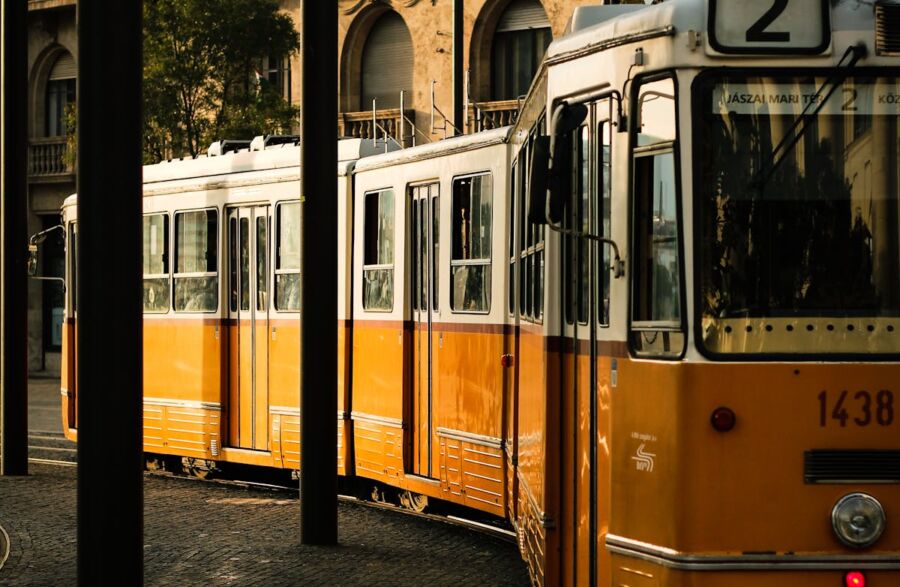
Budapest gives Berlin a run for its money with its own stellar transit setup. The backbone here is the M1 line – Europe’s oldest subway line still chugging along today! Newer metro lines complement it nicely.
Trams are a big deal in Budapest. These yellow beauties cruise along major streets, offering great views as you travel. They’re especially scenic along the Danube riverfront.
Buses round out the options, reaching hilly Buda and outer areas. Like Berlin, one ticket works for everything. Budapest’s system doesn’t run 24/7, but night buses pick up the slack after hours.
Bonus for boat lovers: Ferries on the Danube double as public transport in warmer months. A fun way to cross between Buda and Pest!
Cultural Attractions Duel
Berlin and Budapest both offer amazing cultural experiences. Each city has unique museums, landmarks, and sights that showcase their rich histories and vibrant arts scenes.
Berlin’s Museum Island
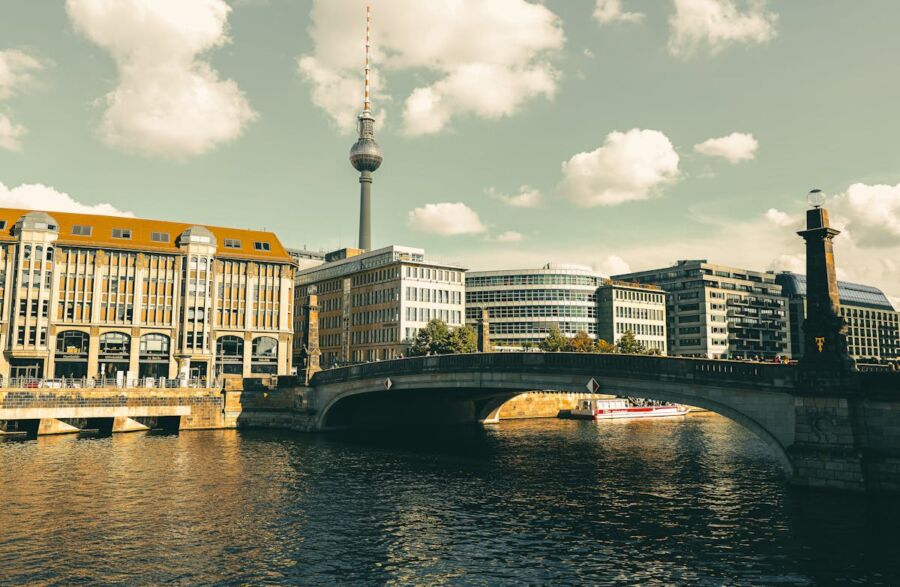
Museum Island is a must-see spot in Berlin. It’s home to five world-class museums. The Pergamon Museum has ancient Greek and Roman treasures. The Neues Museum houses the famous bust of Nefertiti.
Art lovers will enjoy the Alte Nationalgalerie’s paintings. History buffs can explore the Bode Museum’s sculptures. The Altes Museum shows off Greek and Roman antiquities.
Visitors can buy a day pass to see all five museums. It’s best to plan ahead and pick a few favorites. Trying to see everything in one day can be tiring.
Sightseeing in Budapest
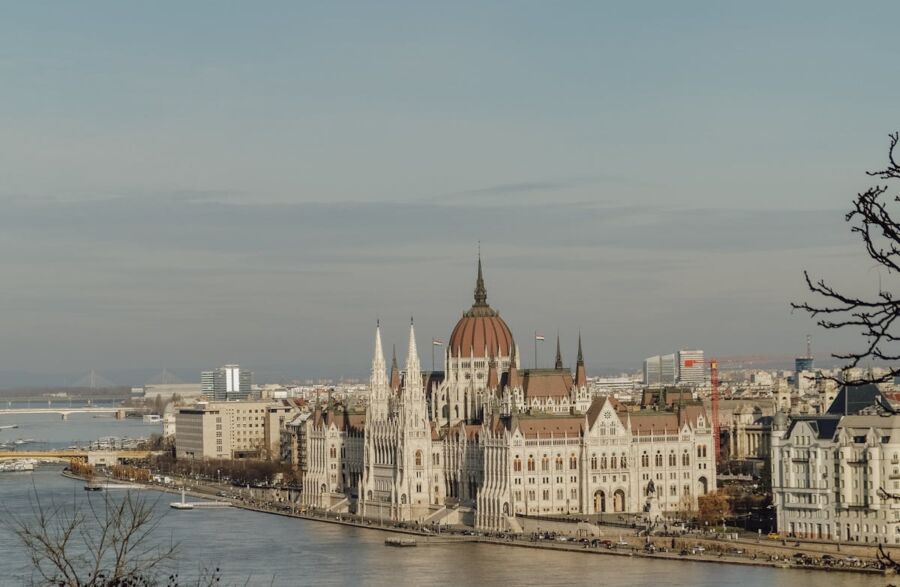
Budapest has lots of beautiful sights to see. Buda Castle is a top attraction. This huge palace sits on a hill with great views of the city. Inside, there are museums about Hungarian history and art.
The Hungarian Parliament Building is another stunner. It’s right on the Danube River. Tours let visitors see the fancy rooms inside.
For a relaxing break, try one of Budapest’s famous thermal baths. The Széchenyi Baths are the largest. Soaking in the warm water is a fun local experience.
Don’t miss the ruin bars in the Jewish Quarter. These quirky bars in old buildings are great for nightlife and meeting locals.
Shopping Havens
Berlin and Budapest offer unique retail experiences for shoppers. Both cities have distinct styles and atmospheres when it comes to shopping, from trendy boutiques to traditional markets.
Berlin’s Retail Therapy
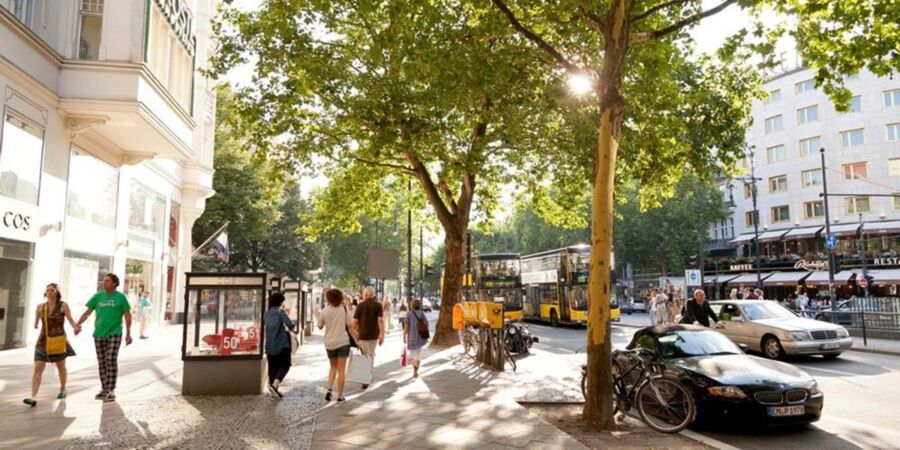
Berlin’s shopping scene is a mix of high-end and alternative. Kurfürstendamm, or Ku’damm, is the main shopping street. It’s got big department stores and fancy brands. But Berlin’s real charm is in its quirky neighborhoods.
Hackescher Markt is great for indie designers and cool cafes. You’ll find one-of-a-kind clothes and accessories here. Prenzlauer Berg has lots of vintage shops and flea markets. It’s perfect if you’re looking for something unique.
Don’t miss KaDeWe, Europe’s second-largest department store. It’s huge and has everything from designer clothes to gourmet food. The food hall on the top floor is amazing.
Budapest Marketplaces
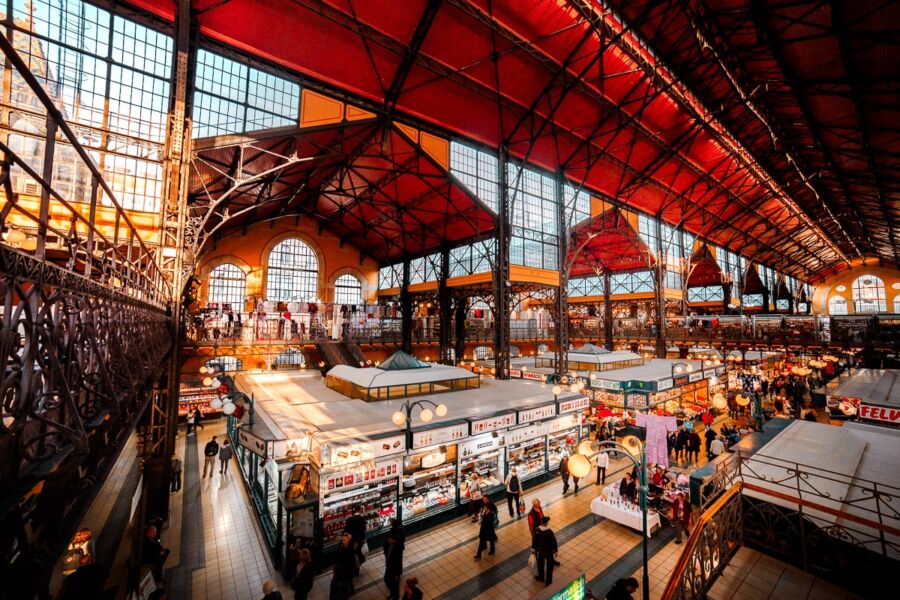
Budapest’s shopping is more traditional. The city’s famous market halls are a must-visit. The Great Market Hall is the biggest and most popular. It’s in a beautiful old building and sells fresh produce, spices, and souvenirs.
Váci Street is the main shopping area. It’s got a mix of international brands and local shops. Fashion Street nearby is good for high-end shopping.
For unique gifts, check out the Christmas markets in winter. They sell handmade crafts and traditional Hungarian foods. The Gozsdu Courtyard is great for browsing small shops and grabbing a coffee.
Remember, you can get a VAT refund on big purchases in both cities if you’re from outside the EU. Just ask for a tax-free form when you buy.
Accommodation and Budgeting
Berlin and Budapest offer different options for travelers’ wallets. Let’s peek at what each city has in store for your stay and spending.
Staying in Berlin
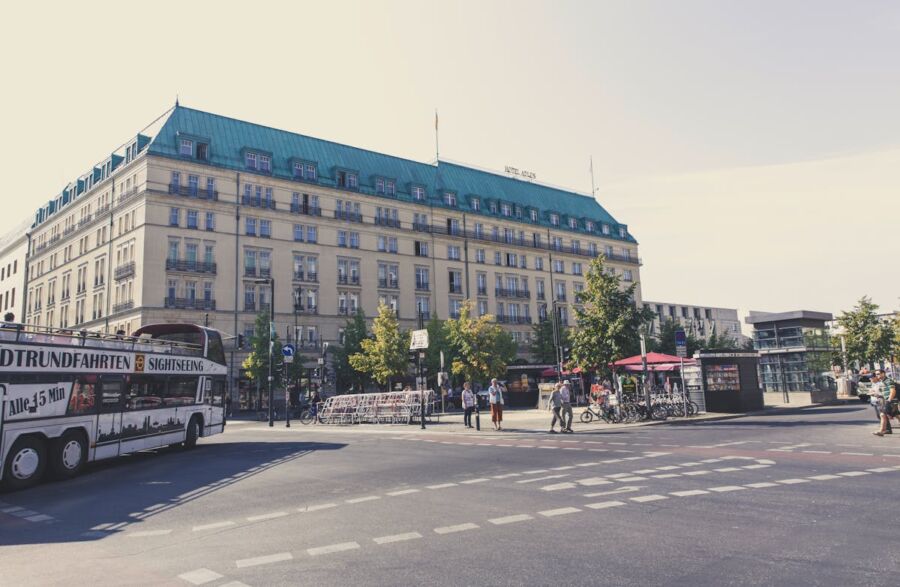
Berlin’s got a mix of pricey and budget-friendly digs. Fancy hotels in the city center can cost a pretty penny. But don’t fret! There are tons of cozy hostels and affordable apartments for budget travelers.
A bed in a hostel dorm might set you back €20-30 per night. Private rooms usually start around €50-60. For a mid-range hotel, expect to pay €80-120 nightly.
Pro tip: Book early in busy seasons like summer and Christmas markets time. Prices can jump up fast!
Lodging in Budapest
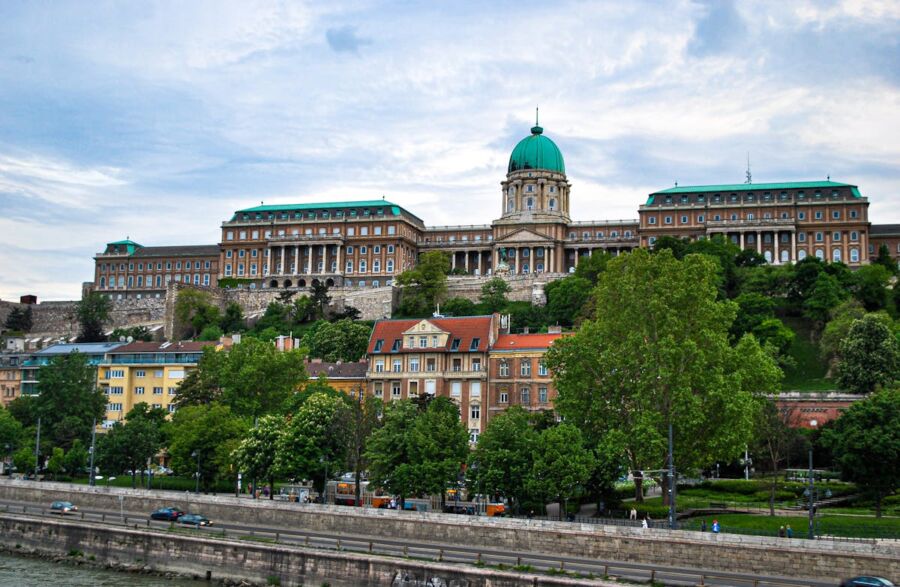
Budapest is a budget traveler’s dream. Your money stretches way further here than in Berlin. Hostels are super cheap, with dorm beds from €10-15 a night.
Private rooms in budget hotels start around €30-40. Mid-range spots go for €50-80. Even fancy places often cost less than similar digs in Berlin.
Budapest’s got loads of cool rental apartments too. They’re great for longer stays or groups. You can find nice ones for €40-60 a night.
Bonus: Many Budapest hostels have awesome social scenes. Perfect for meeting other travelers!
Seasonal Considerations
Berlin and Budapest offer distinct experiences throughout the year. The weather and special events in each city can greatly impact your visit. Let’s explore the seasonal highlights of these two captivating European capitals.
Berlin Throughout the Year
Berlin’s weather changes quite a bit from season to season. Summers are warm and pleasant, perfect for enjoying the city’s many parks and outdoor festivals. You’ll find temps in the 70s Fahrenheit (low 20s Celsius) from June to August.
Fall brings cooler weather and beautiful foliage. It’s a great time to explore museums and cozy cafes. Winter can be chilly, with temps often below freezing. But the city comes alive with twinkling Christmas markets in December.
Spring sees the city bloom. Parks fill with flowers and locals flock to outdoor beer gardens. Rainfall is pretty steady year-round, so pack an umbrella no matter when you visit.
Best Times to Visit Budapest
Budapest shines in spring and fall. April to May and September to October offer mild temps and fewer crowds. You can stroll along the Danube without breaking a sweat.
Summers get hot, often hitting the 80s Fahrenheit (high 20s Celsius). But this is prime time for outdoor festivals and lounging in thermal baths. The city’s parks and riverfront areas buzz with activity.
Winter brings a magical feel, especially around the holidays. Christmas markets pop up all over, selling mulled wine and traditional crafts. Just bundle up – temps can dip below freezing.
Rainfall is generally low year-round. Budapest gets more sun than Berlin, especially in autumn. October sees about 152 hours of sunshine compared to Berlin’s 106 hours.
Exploring Beyond Tourist Paths
Berlin and Budapest have so much more to offer than just the famous sights. Let’s uncover some hidden treasures in these cities that most visitors miss.
Hidden Gems in Berlin
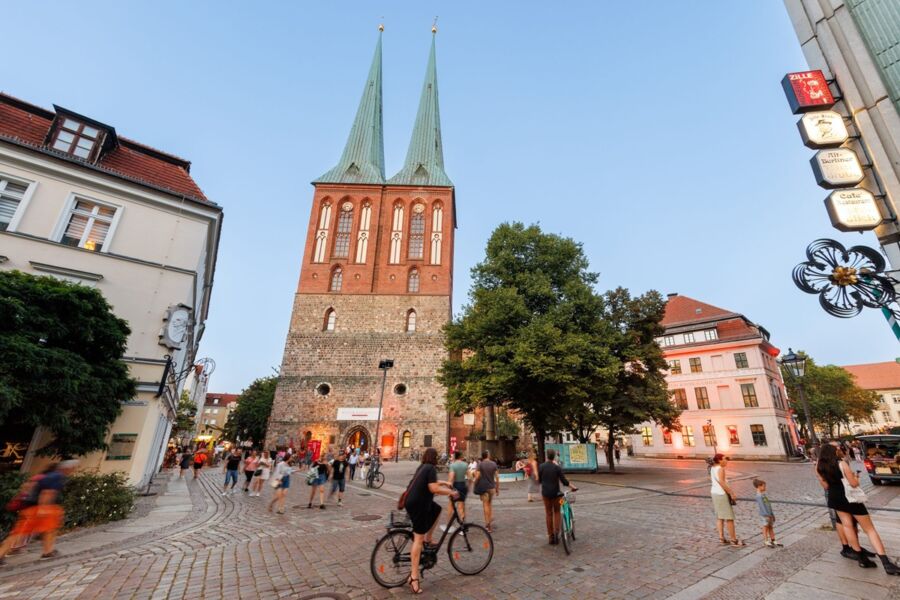
Berlin’s off-the-beaten-path spots are truly special. Take a stroll through the charming Nikolaiviertel, the city’s historic heart. This quaint area feels like stepping back in time with its cobblestone streets and medieval buildings.
Nature lovers should check out Tempelhofer Feld. This huge park used to be an airport! Now it’s a favorite spot for locals to bike, picnic, and fly kites.
For a unique art experience, visit the Urban Nation museum. It showcases amazing street art from around the world. The museum’s exterior is covered in murals too!
Foodies can’t miss Markthalle Neun. This indoor market has delicious local eats and a great atmosphere. Try the currywurst – it’s a Berlin classic!
Budapest’s Undiscovered Corners
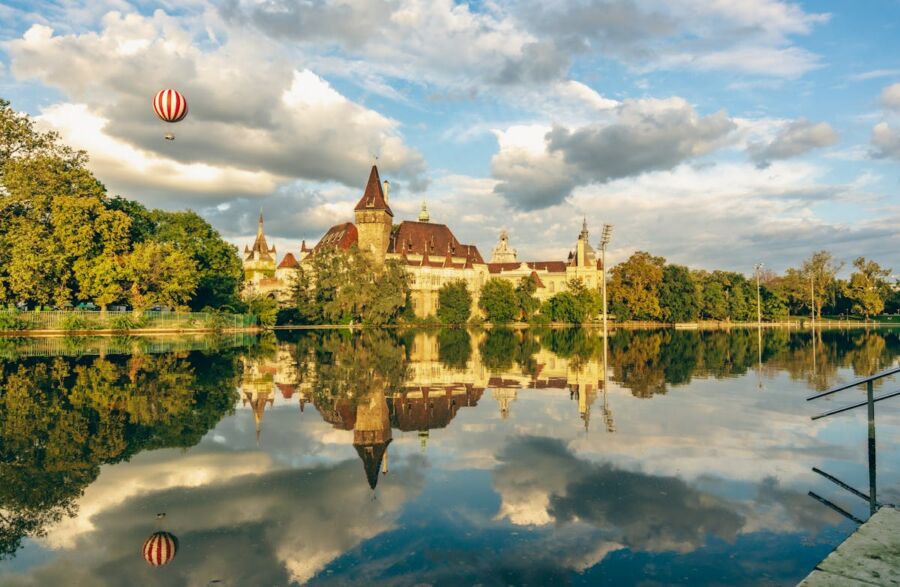
Budapest has plenty of secrets waiting to be found. Start with a visit to Vajdahunyad Castle in City Park. This fairy-tale castle looks ancient but was actually built in 1896. It’s a mix of different architectural styles from across Hungary.
For a peaceful escape, head to Margaret Island. This green oasis in the middle of the Danube is perfect for a leisurely walk or picnic. Don’t miss the musical fountain!
Coffee lovers should seek out New York Café. It’s called “the most beautiful café in the world” and lives up to the hype. The ornate decor is stunning.
Lastly, take a dip in Veli Bej Bath. It’s one of the oldest Turkish baths in the city but less crowded than the famous Széchenyi Baths. The octagonal pool under a domed roof is magical.
Frequently Asked Questions
Budapest and Berlin are two fascinating European capitals with distinct personalities. Let’s explore some key differences between these cities to help you decide which one might be the better fit for your next adventure.
What are the differences in cultural experiences between Budapest and Berlin?
Budapest offers a blend of old-world charm and modern vibrancy. The city’s thermal baths, like Széchenyi, are a unique cultural experience. Berlin, on the other hand, is known for its cutting-edge art scene and diverse neighborhoods. Street art tours in areas like East Side Gallery showcase Berlin’s creative spirit.
How do the nightlife scenes in Budapest and Berlin compare?
Berlin is famous for its wild nightlife and underground techno clubs. Spots like Berghain are legendary. Budapest’s ruin bars, like Szimpla Kert, offer a more laid-back vibe. These quirky venues in old buildings have a charm all their own.
Can you highlight the cost of living contrasts between Budapest and Berlin?
Budapest tends to be more budget-friendly than Berlin. Meals, drinks, and accommodation often cost less in the Hungarian capital. Berlin, while pricier, still offers good value compared to other major European cities. Both places have options for different budgets.
What should travelers consider when choosing between Budapest and Berlin for a vacation?
Think about your interests. Budapest is great for history buffs and those who enjoy thermal baths. Berlin appeals to art lovers and night owls. Weather might play a role too. Budapest gets more sun in autumn, with 152 hours compared to Berlin’s 106 hours.
In terms of size and population, how does Budapest stack up against Berlin?
Berlin is larger, with about 3.7 million people. Budapest has around 1.7 million residents. This difference shows in the pace of life. Berlin feels more sprawling and diverse, while Budapest has a cozier vibe.
Are there any significant historical contrasts between Budapest and Berlin that tourists should be aware of?
Both cities have rich histories, but with different focal points. Budapest’s history spans back to Roman times. Its grand architecture reflects its past as a key city in the Austro-Hungarian Empire. Meanwhile, Berlin’s recent history is marked by World War II and the Cold War. The Berlin Wall and its fall are central to the city’s story.



